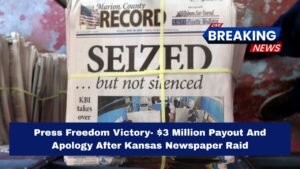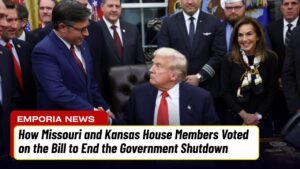Protests have spread throughout the United States, following days of demonstrations in Los Angeles, as California prepared for a legal battle over President Donald Trump’s decision to deploy military personnel to address immigration concerns.
Los Angeles Protest Escalates Over Immigration Tactics
More than 1,000 individuals gathered in Los Angeles on Wednesday for the sixth consecutive day of protests, which remained peaceful despite pockets of unrest. As demonstrators marched through the streets, tensions over the government’s hardline stance on illegal immigration intensified.
City officials had imposed a second night of curfew in an attempt to control after-dark violence and looting, which had marred parts of the city in its vast 500-square-mile (1,300-square-kilometer) area.
Lynn Sturgis, a 66-year-old retired teacher and protester, shared a message of reassurance, stating that Los Angeles was not “burning down” as President Trump had suggested. “Our city is not at all on fire,” she said. “It’s not burning down, as our terrible leader is trying to tell you.”
Escalation of Migrant Apprehension Efforts
The protests were initially sparked by an abrupt escalation in efforts to apprehend migrants residing illegally in the United States.
While the demonstrations remained mostly non-violent, there were isolated incidents, including the burning of autonomous taxis and stone-throwing at law enforcement.
These actions, however, were not new to the Los Angeles Police Department (LAPD), which is accustomed to managing civil disturbances.
In Spokane, Washington, a curfew was also enacted after over 30 protesters were arrested, and police deployed pepper balls to disperse crowds. Local law enforcement had to take swift action to maintain order, as tensions over the deployment of military forces surged.
Trump’s Military Response to Immigration Crisis
President Trump, who ran on a platform promising to tackle illegal immigration, has now used the situation to leverage political support. In response to the growing unrest, Trump ordered the deployment of the California National Guard, despite Governor Gavin Newsom’s objections. This marked the first time in decades that a U.S. president had taken such action.
As Trump emphasized the need to secure the nation, he stated, “We’re going to have a safe country. We’re not going to have what would have happened in Los Angeles. Remember, if I wasn’t there, Los Angeles would have been burning to the ground.”
Military Deployment and Its Financial Impact
Approximately 1,000 out of the 4,700 troops deployed were tasked with protecting facilities and working alongside ICE agents, as stated by Deputy Commanding General of Army North, Scott Sherman.
Additionally, 700 active-duty Marines were either on standby or in training for civil disturbance management. The Pentagon estimates the cost of this deployment to be $134 million.
Despite the deployment, Governor Newsom, a Democrat with presidential aspirations, accused Trump of escalating tensions for political gain. He warned that such militarization could spread beyond California, jeopardizing democracy.
Legal Battle to Block Military Involvement
On Thursday, California’s legal team appeared in court to seek an injunction preventing the military from accompanying immigration officers as they arrested migrants. Trump’s legal team dismissed this as a political maneuver, accusing California of playing political games.
Nationwide Protests and Growing Resistance
Protests continued to unfold in cities like St. Louis, Raleigh, Manhattan, Indianapolis, and Denver. In San Antonio, hundreds of protesters gathered near City Hall, where Texas Governor Greg Abbott had deployed the state’s National Guard.
A nationwide “No Kings” protest was planned for Saturday, coinciding with Trump’s highly publicized military parade in Washington, D.C., to mark the U.S. Army’s 250th anniversary and his 79th birthday.
The Administration’s Narrative: A Manufactured Crisis
The Trump administration has framed the protests as a violent threat to national security, arguing that military support is necessary to bolster immigration enforcement.
However, Los Angeles Mayor Karen Bass criticized the narrative, claiming that the crisis was artificially created by the White House.
“A week ago, everything was peaceful in the city of Los Angeles,” she said. “Things began to be difficult on Friday when raids took place… that is the cause of the problems. This was provoked by the White House.”
Continued Tensions and Armed Arrests
The situation escalated with armed arrests by masked individuals. In one incident, five armed men in out-of-state vehicles detained a Spanish-speaking man in the parking lot of a church in Downey, a Los Angeles suburb.
When the pastor challenged the men and asked for their badge numbers, they refused and pointed rifles at her, ordering her to “get back.”
The protests over immigration enforcement in the United States have sparked widespread unrest, with many questioning the effectiveness and morality of the government’s hardline tactics.
As legal challenges unfold and demonstrations continue, the nation remains divided over how to handle illegal immigration and the militarization of law enforcement.




